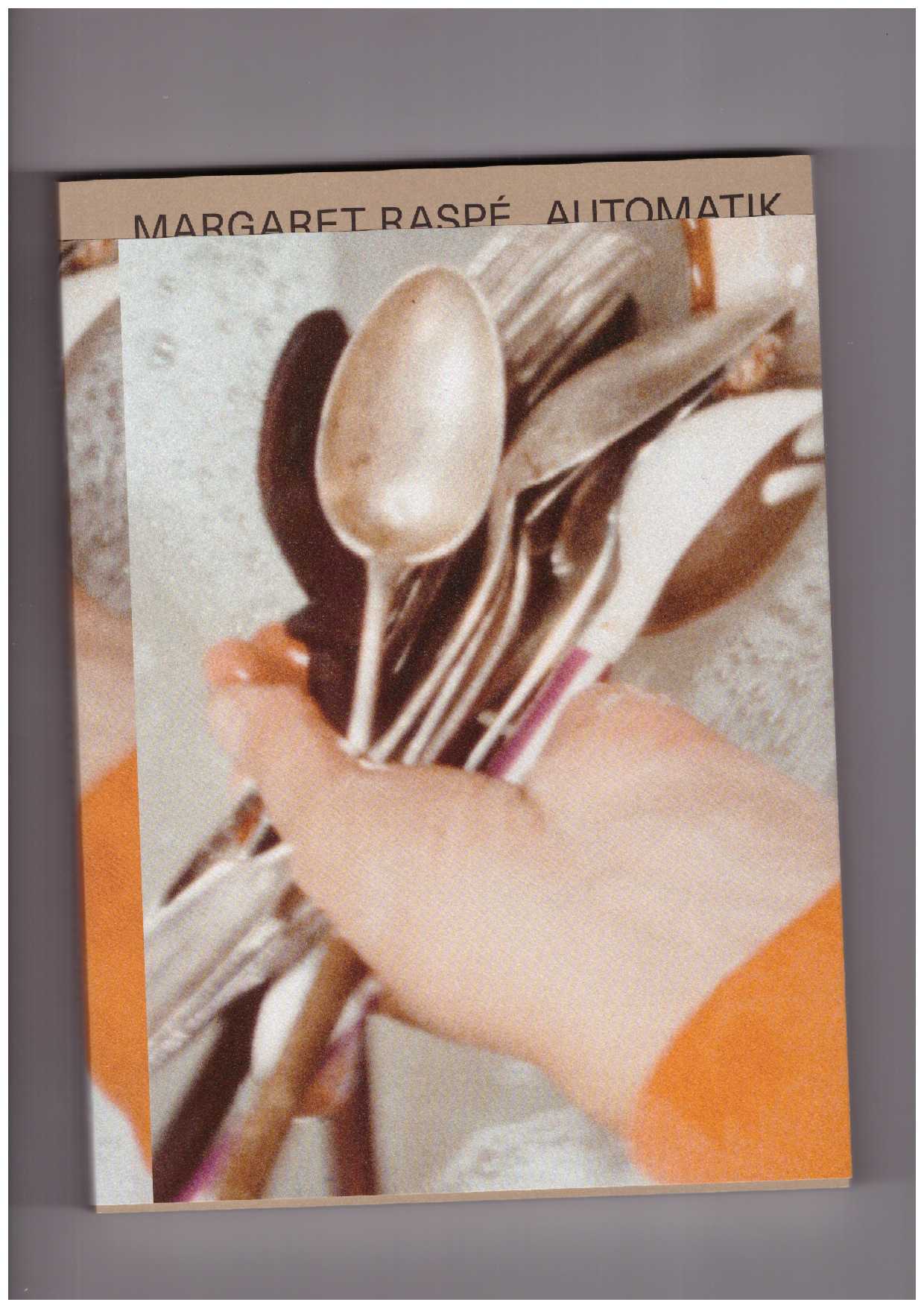RASPÉ, Margaret; GRITZ, Anna (ed.); WILSON, Eva (ed.)
Margaret Raspé: Automatik
To be read stuttering:
A a a a
aa aa
Autoto toto toto
Automa mama
ma matik
Automamatik
Automatik
tiktik tiktik
tiktik tiktik
—Margaret Raspé, Automatik, 1970
Automatik is the first comprehensive retrospective exhibition by Berlin-based artist Margaret Raspé (b. 1933 in Wrocław). Over the past five decades, Raspé has created a significant body of work in the immediate vicinity of the institution, developing an idiosyncratic artistic language that considers life and art, and their everyday conditions, in unison. With this exhibition, Haus am Waldsee tells the story of a radically local art history of global relevance, mirroring the dynamics of its own institutional history.
In addition to her acclaimed film works from the 1970s and 80s, Raspé’s oeuvre consists of performances, photo series, sound works, and large-scale installations in both indoor and outdoor settings. The investigation of perceptual processes is central to her practice. Ephemeral approaches that respond distinctly to their environments are employed to investigate given societal structures, using lived realities as a starting point.
As early as 1971, Raspé developed the so-called ‘camera helmet’ before these were industrially available: a construction site helmet equipped with a Super 8 camera that captures the central perspective of the artist’s gaze and enabled her to film her everyday life. The resulting films show the artist performing routine tasks, including housework, which are usually executed rather unthinkingly, or automatically. Raspé’s hands can be seen in clinical detail, whipping cream into butter in Der Sadist schlägt das eindeutig Unschuldige, 1971, baking a cake in Backe Backe, Kuchen, 1973, or washing up in Alle Tage wieder – let them swing!, 1974. Besides lending visibility to often invisible, ordinary chores, the films also bear witness to the mostly unconscious physical processes at work. These automated actions are sometimes violent in the way they transform their matter, but equally remain banal. The automatic is examined as a process that takes place between cerebral and manual work. The body is considered as a programmable ‘Mensch-Maschine’ (human machine) or as a ‘Frautomat’ (female robot), to which the camera helmet acts as a prosthetic extension and enables the viewer to experience the artist’s own perspective, universally mirrored.
With texts by Kari Rittenbach, Emily LaBarge, Anna Gritz, Eva Wilson.
Published by Verlag der Buchhandlung Walther König / Haus am Waldsee, 2023
Design by HIT & Veronika de Haas, Berlin
Monographs
